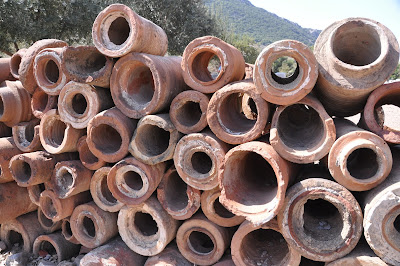I was very much looking forward to visiting Ephesus as there had been many stories around it, particularly in the New Testament. The apostles Paul and John lived there at one point; there was even the possibility that the Gospel of John might have been written in Ephesus and there were claims that the Virgin Mary may have stayed at one of the houses in the last year of her life, making it a popular destination for Catholic pilgrims even though evidence were mixed.
We arrived in the ancient city on a scorchingly hot day. The blazing sun reflected on the bare rocks made it feel like an oven and this was the end of September. The huge crowds descending upon the ruins added to the heat. But it was exciting to walk on the marble path that had been there since 10th century BC and imagine the merchants who had set up shop in the agora with its many partitioned cubicles. Particularly intriguing were the latrines with its drainage and the Roman baths.
But the most fascinating section of the ruins were the terrace houses that were excavated in 1960. These were tenements of the rich, with their own sophisticated heating system of clay pipes which brought hot air under the floors and behind the walls. The mosaics on the floors and frescoes could be seen in the two houses that had been converted into a museum. Visitors were able to walk through and see the rooms and the peristyle interior courtyards and imagine them in their past glory.
I found the most beautiful part of the ruins was the Library of Celsus, built in 135 AD in honour of the Roman Senator Celsus and also served as his mausoleum (crypt under the library). The library was destroyed over two earthquakes in the 3rd and 11th centuries and laid in ruins until the facade was rebuilt in the 1970's. It was absolutely gorgeous!
The most famous ruin in Ephesus was the Temple of Artemis, built in the 6th century BC - it's one of the Seven Wonders of the Ancient World and was located outside the main ruins. It was a little disappointing to see this much touted wonder as all that was left of it was one solitary column, but it was a touching reminder of what it once was.
After the extended tour of the ancient ruins with our diligent guide Hamid, we had neither the energy nor time to visit the rest of the city even though its Grand Bazaar was supposedly as impressive as the one in Istanbul. Maybe next time...

























Lovely pictures of the ruins. The write-ups make the pictures more interesting. Good job
ReplyDeleteThanks for your support, Connie. Enjoyed doing it.
ReplyDelete